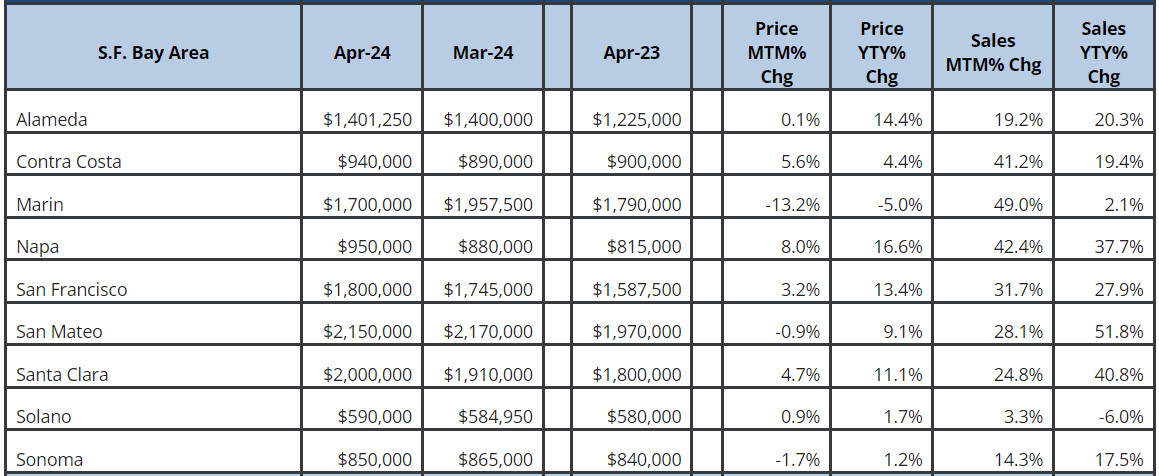American consumers spent less than anticipated at the beginning of the second quarter, with retail sales in April remaining flat month-over-month but rising 3.0% year-over-year. This flat monthly growth represents a significant slowdown from the 0.6% increase recorded in March and falls well short of the expected 0.4% increase. Factors such as Easter occurring in March and Amazon’s Spring Sales Event likely pulled some sales forward, contributing to a 1.2% drop in online spending in April compared to the previous month. This recent deceleration in retail sales may indicate that inflation and high interest rates are beginning to curb consumer spending. However, additional data over the coming months will be needed to confirm a consistent downtrend in spending activity.
Home Sales Rebound in April
The California housing market showed signs of recovery in April, regaining some momentum lost in March. Sales of existing single-family homes in California increased to 275,540 in April 2024, a 3.0% rise from 267,470 in March and a 4.4% increase from 263,960 in April 2023. However, statewide pending sales declined by 4.0% compared to last year due to steadily rising mortgage rates throughout April. This decrease in open-escrow sales suggests that closed sales in May might see a month-over-month and year-over-year slowdown. Nevertheless, with mortgage rates easing since the start of May, more buyers might reenter the market as the homebuying season progresses.
California Median Price Hits New Record High
In April, the statewide median price for existing single-family homes in California achieved a new record high. The median price soared to $904,210, marking a 5.8% increase from March and an 11.4% jump from $811,510 in April 2023. This robust year-over-year growth represents the tenth consecutive month of annual price increases for the state and the highest since March 2022. Notably, this is the first time in California’s history that the statewide median price has surpassed $900,000. With tight inventory conditions and seasonal factors, more record-setting prices are likely before summer ends, continuing to exert upward pressure on home prices.
Housing Starts Improve but Builder Sentiment Declines for First Time in Six Months
In April, the U.S. Census Bureau reported a seasonally adjusted annual rate of 1.36 million housing starts, reflecting a 5.7% increase from March but a slight 0.6% decrease from 1.37 million in April 2023. This rise in construction activity was driven entirely by a significant 30.6% increase in multifamily development. In contrast, single-family starts decreased by 0.4% month-over-month but saw a notable 17.7% year-over-year increase from April 2023. However, this marked the second consecutive month of decline for single-family starts, coinciding with a three-month slip in single-family permits.
Despite the overall improvement in housing starts, rising mortgage rates in April created uncertainty, causing many homebuilders to pause their activities. According to the National Association of Home Builders/Wells Fargo Index, homebuilder confidence fell for the first time in six months, with the West experiencing the most significant drop, where the index fell by 12 points to 36. This renewed volatility in mortgage rates has led builders to become more cautious, adjusting their demand outlook downward for the year.







